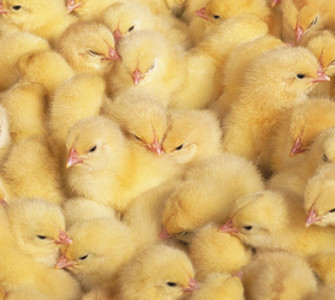Foregoing CAV breeder vaccination based on ELISA results can backfire
Not vaccinating broiler breeders for chicken anemia virus (CAV) because ELISA results show detectable antibodies could be asking for trouble, says Guillermo Zavala, DVM, PhD, Avian Health International, LLC.
In these situations, he explains, poultry companies wrongly assume birds are protected and there is no need to invest in CAV vaccines, which tend to be expensive.
“But it’s not a good strategy,” he told Poultry Health Today.
Without vaccination, breeders may not have enough CAV antibodies to protect offspring during the first critical 2 weeks of life when chicks are very susceptible to clinical infection.
“What you’re hoping to do with vaccination is to get everybody infected at the same time with the vaccine virus and to raise those titers of antibodies as high as possible and as uniformly as possible.”
Consequences in broilers
When broilers aren’t adequately protected against CAV, the consequences typically show up between 7 and 14 days of age. They’ll have increased mortality and unexplained hemorrhages. They start bleeding on the tips of the wings, he continued during an interview at the 2018 International Poultry Scientific Forum.
Most worrisome is CAV’s impact on the immune system. The virus specifically affects bone marrow cells and stem cells in bone marrow produce T-cells. There are several diseases that depend heavily on T-cell immunity and they include coccidiosis, infectious laryngotracheitis and fowl pox virus.
“If chicken anemia wipes out those bone marrow cells, then you have no way to defend…no matter what, against those diseases…Therefore CAV, or chicken infectious anemia, is very central for the protection of the entire immune system,” Zavala explained.
Rely ‘heavily’ on breeder vaccination
The importance of good immunity is especially important now that at least 40% of the poultry industry is raising flocks without antibiotics and the rest of the industry is reducing antibiotic use.
“There are only a handful of infectious diseases that we should be very concerned about when it comes to immune suppression. CAV is one of them. The second one is Marek’s disease. And the third one is infectious bursal disease. And we do have very good tools, in the form of vaccines, to prevent clinical infection with those viruses. So again, now more than ever, we should concentrate on protecting the immune system,” he said.
Zavala said CAV is extremely difficult to eliminate or even reduce through cleaning and disinfection.
“It’s not realistic to think that by cleaning, disinfection and biosecurity you’re going to really eliminate the problem. The strategy has to be a combination of reducing the numbers or concentration of the virus in the environment through cleaning and disinfection but relying very, very heavily on vaccination of breeding stock,” he said.
Vaccination of breeders against CAV generally takes place at about 10 to 12 weeks of age and some poultry producers vaccinate twice. CAV vaccines are usually administered in drinking water or by injection, Zavala said.
Posted on April 19, 2018

















